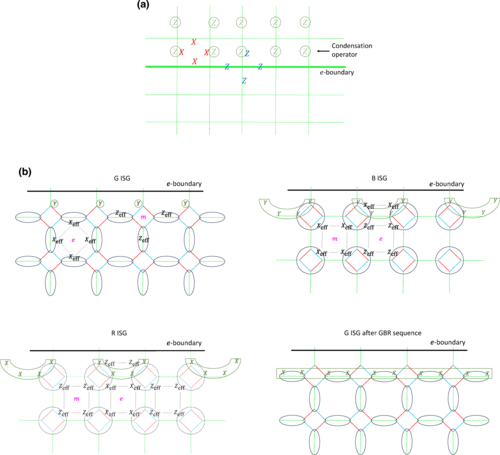Floquet codes, a new class of quantum error-correcting codes, are dynamically generated logical qubits from a periodic schedule of noncommuting measurements. They offer an alternative to the toric code due to their low-weight parity checks and high error threshold.
The engineering of Floquet codes involves rewinding a measurement schedule, a strategy first used to adapt the honeycomb code to a system with a boundary. Recent studies have introduced new examples of three-dimensional (3D) topological Floquet codes, which have significant implications for quantum computation. The development and understanding of Floquet codes are still under active exploration.
What are Floquet Codes and Why are They Important?
Floquet codes are a new class of quantum error-correcting codes that have dynamically generated logical qubits. These qubits are generated from a periodic schedule of noncommuting measurements. The development of new error-correcting codes is a key aspect of quantum computation, as it helps to optimize quantum dynamics, reduce overheads, and minimize noise on logical information.
The concept of Floquet codes was first introduced by Hastings and Haah. In their example, the dynamics of the system were governed by a periodic sequence of non-commuting two-qubit Pauli measurements. This sequence exhibited instantaneous stabilizer codes that are a sequence of topological quantum error-correcting codes. The schedule was designed in such a way that the logical information was preserved from one instantaneous code space to the next.
Floquet codes offer compelling alternatives to the toric code due to their low-weight parity checks and relatively high error threshold. The understanding of Floquet codes is still under active development, which underscores the importance of introducing new examples and formalizing the tools to develop new Floquet codes.
How are Floquet Codes Engineered?
The engineering of Floquet codes involves the concept of rewinding a measurement schedule. This is where the sequence of measurements is reversed at some point within a period. This strategy was first stated to adapt the honeycomb code to a system with a boundary.
In the context of Floquet codes, the sequence of measurements can be considered as performing a sequence of condensations on a parent stabilizer code. The operators associated with condensation in one step can sometimes survive as finite-weight stabilizers under subsequent measurements. This is referred to as the evolution of the condensation checks. Under rewinding, the evolution of condensation checks is reversed before all of them evolve into nonlocal stabilizers.
What are the New Examples of Floquet Codes?
In a recent study, new examples of three-dimensional (3D) topological Floquet codes were introduced. These include the 3D Floquet toric code (TC), the Xcube Floquet code with a rewinding schedule, and the 3D Floquet fermionic toric code (FTC). A new 2D Floquet code, called the Floquet color code, was also constructed.
In the examples of the 3D Floquet TC and Xcube Floquet code, the evolved condensation checks at each step determine the topological order of the instantaneous stabilizer groups (ISGs). Rewinding helps to obtain a desired set of ISGs on both toric and planar layouts.
What is the Significance of the New Floquet Codes?
The new Floquet codes have significant implications for quantum computation. For instance, the 3D Floquet TC exhibits a splitting of the topological order of the 3D toric code under the associated sequence of measurements. This means that an ISG of a single copy of the 3D toric code in one round transforms into an ISG of two copies of the 3D toric code up to nonlocal stabilizers in the following round.
The Xcube Floquet code can be modified by a rewinding schedule such that each of the ISGs is finite depth equivalent to the Xcube model up to toric codes. The Xcube Floquet code exhibits a splitting of the Xcube model into a copy of the Xcube model and toric codes under the measurement sequence.
The 3D Floquet FTC is a generalization of the 2D Floquet toric code on the honeycomb lattice to three dimensions. It has ISGs with the same topological order as the 3D fermionic toric code.
What is the Future of Floquet Codes?
The development of Floquet codes is still in its early stages, and there is much to learn about their potential applications and limitations. The introduction of new examples and the development of tools to engineer these codes are crucial steps in this process.
The concept of rewinding a measurement schedule is a promising tool for the development of new Floquet codes. It allows for the manipulation of the topological order of ISGs, which could have significant implications for quantum computation.
The new examples of Floquet codes introduced in the recent study provide a foundation for further exploration and development in this field. As our understanding of these codes continues to grow, they could play a crucial role in the advancement of quantum computation.
Publication details: “Engineering 3D Floquet Codes by Rewinding”
Publication Date: 2024-04-08
Authors: Arpit Dua, Nathanan Tantivasadakarn, Joseph Sullivan, Tyler D. Ellison, et al.
Source: PRX Quantum 5, 020305
DOI: https://doi.org/10.1103/PRXQuantum.5.020305

